| 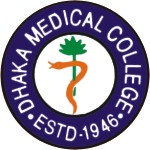 Spotlight Spotlight
Sixty Three Years of
Dhaka Medical College
Dr Monilal Aich Litu & Dr Abdul Hanif Tablu
Photos: Dhaka Medical College Archives & Dr Abdul Hanif Tablu
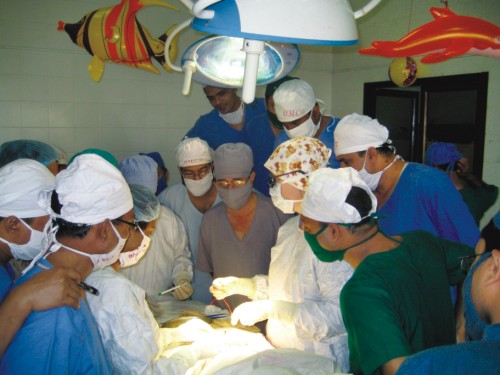
ON July 10, 2009 Dhaka Medical College (DMC) celebrated its sixty-third anniversary. DMC started its journey in July 1946 with less than 150 students. Now, it is the largest and biggest medical college and hospital in the country. It has more than 1700 beds and 1100 undergraduate and 900 postgraduate students. DMC has a fine tradition of providing medical services to the nation and producing the finest of doctors working in both the country and abroad.
The Beginning
Though the college did not have a building of its own at the beginning, the present hospital building was there from long ago, even before the 'Bangabhango' of 1905. It was established in 1904 as the secretariat of the newly formed province East Bengal and Assam. Not doctors, but bureaucrats used to roam about in its busy corridors then!
In 1921, when University of Dhaka began its journey, the building was handed over to the University administration. At that time, a part of this huge building was used as the University's Medical Centre, another part as students' dormitory and the rest as the administrative wing of the Arts faculty truly a unique combination! During the 2nd world war it changed its color yet again, when it became the American Base Hospital. At the end of the war the Americans left, but the hospital remained. Through the course of time, the 100-bed hospital of that time is Bangladesh's largest hospital today.
In 1946, students were admitted in all years. The 1st year was named K-5, 2nd year K-4, 3rd year K-3, 4th year K-2, and 5th year K-1. All the students except K-5 had migrated from Calcutta Medical College. The main reason behind it was the partition of 1947. Though about half of the present students are females, there used to be none at the beginning.
Major W J Virgin, the head of the committee formed before establishing Dhaka Medical College, was the first principal. Since the college did not have Anatomy and Physiology departments at first, the students had their classes in Mitford Medical School. After a month, Prof. Pashupati Basu of Anatomy and Prof Hiralal Saha of Physiology joined the staff and the classes began in ward no. 22 of the hospital. There was no lecture gallery or dissection hall at that time. These needs were met after the foundation of the college building in 1955.
Current Condition
Starting with only one building, Dhaka Medical College now consists of a college building, an auditorium, a Nuclear Medicine Centre, male and female dormitories, burn units etc. scattered on about 25 acres of land. In 34 different departments and 42 wards - 234 doctors, 140 interns, 560 nurses and 1100 other staffs are dedicated to ensure 24-hour health services. The hospital now consists of about 1700 beds, rendering services to almost 3000 inpatients everyday. Due to tremendous patient load a new 600-bed building is being constructed.
Every year 180 students are admitted in the MBBS course. After passing 3 professional examinations of the 5-year programme a student becomes eligible of being a doctor and has to complete one year internship at the Dhaka Medical College Hospital. The Medical College also offers 39 different post graduate courses. Now there are about 1100 MBBS students and 900 doctors are in Postgraduate program. The present 37th Principal is Neurologist Prof. Quazi Deen Mohammad (K-30).
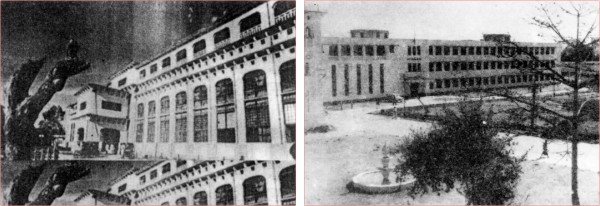
The mysterious 'K'
Each and every batch of Dhaka Medical College is named 'K'. No specific explanation was found regarding this 'K'. Therefore various theories are found. Some say 'K' is the 11th letter of English alphabet indicating that DMC was the 11th medical college in the subcontinent at that time. Whatever the meaning is, at this moment 'K' is the identity of almost 10,000 ex and present students of DMC. The latest batch is K-66.
Dhaka Medical College and its role in National History
 |
| First Principal of DMC, Dr. William John Virgin |
It will not be an exaggeration to say that the history of DMC is the history of Bangladesh itself, as DMC was involved in all the national movements of Bangladesh. Dhaka Medical College dormitory (known as Barrack) was the heart of the language movement from 1948 to 1952. The Barrack was situated at the same place the Central Shaheed Minar is right now. There was about 20 tin shed barracks where the medical students resided. Being close to the then Parliament of East Pakistan (presently Jagannath Hall of DU), the medical dormitory was chosen as the centre of the student movement due to strategic reasons.
From early hours of February 21, 1952 all the students of Dhaka started to gather in front of medical college dormitory. The procession was headed for the parliament as the session was being held. As section 144 was imposed and armed police force was on guard, no procession whatsoever was possible. But the courageous students decided to break section 144 at 4:00 PM from the historical “Aam-tola” (which was situated beside the present day Emergency gate). The police fired at the procession without any mercy. Salam, Barkat, Rafique, Jabbar and Shafiur died a tragic death.
After sundown February 21, at the very spot flooded by the martyrs' blood, the students of Dhaka Medical College decided to build a monument. They worked overnight on February 22 and 23 and finished the construction, using the bricks, gravel and cement reserved for the hospital.
The students of DMC played a vital role in the student and mainstream politics of the 60's as well. When the military government of Ayub Khan started torturing the political leaders, the central student leaders took refuge in the Bakshibazar students' dormitory. Most of the meetings deciding the upcoming line of action were held in the college campus. During the movement protesting the martial law and the Hamidur Rahman Education Commission, DMC and its dormitory were not only a safe refuge for the student leaders, many students of this institution also had active participation in it.
On January 20, 1969 police fired and charged on the procession of students near the present emergency gate and student leader Asaduzzaman was severely injured. He was admitted in the hospital but breathed his last in ward no. 8 before any treatment was possible. The students of the medical colleges led a procession with the blood stained shirt of Shaheed Asad. Shortly after the students of Dhaka University had raised the flag of independent Bangladesh in the “Bot tala” of DU on March 2, 1971, the doctors of DMCH raised it at the peak of present Doctors' Cafeteria.
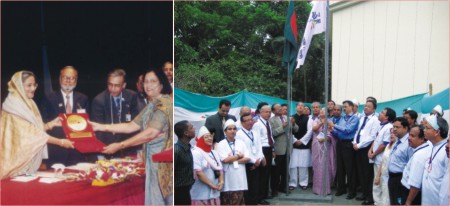
Liberation War, 1971
The students, nurse, staffs and doctors who had passed from DMC played a major role in the war of our independence. Many of them were engaged in the battlefield, while others treated the injured freedom fighters in the hospital risking their lives.
Almost all the doctors working at DMCH used to help the injured freedom fighters by admitting them under false names. All of this coordinated by Dr. Fazle Rabbi.
Dhaka Medical College had also made its mark in the mass uprising of 90's. The doctors actively participated in the movement protesting the anti people health policy of the government of that time under the banner of BMA.
Different Facilities and Achievements
Dhaka Medical College has two museums. Also, the National Forensic DNA Profiling laboratory is the first of its kind in Bangladesh. This laboratory is to assist the investigation concerning murder, rape, paternity, maternity, immigration, distribution of wealth among successors, deformed dead bodies and other cases needing identification.
The talented students of DMC are not mere bookworms, rather they have made their mark over the decades by their proud achievements in extra curricular activities. Shahjahan Hafiz, a student in the fifties was a leading Rabindra songs artist in the then East Pakistan Radio. The notable alumni of DMC includes current Foreign Minister Dr Dipu Moni, current Health Minister Professor Dr Ruhul Huq, Health Advisor to the Prime Minister Dr. Syed Modasser Ali, former President of Bangladesh Dr. A.Q.M. Badruddoza and many other distinguished personalities.
This college has made admirable achievements in inter medical college literature and cultural competitions. DMC became champions and runners up in Debate Competition organized by Bangladesh television more than once; came third in `Gyan Jiggasa` in 1985 and Champions in 1987 - a national general knowledge competition of Bangladesh Television. Dhaka Medical College has many voluntary organizations namely Computer Club Of Dhaka Medical College, Debating Club of DMC, Rotaract Club, Medicine Club etc.
Dhaka Medical College Football team won the ``Tarubala shield in 1947 organiged by district sports` association: the team captained by Mirza Mazharul Islam beat renowned clubs like Wari on its way to title. Athletics Secretary of first DMCSU (1949-50) was Mazharul Islam Damal who expressed his sporting ability by creating a Bang as the opening batsman of Pakistan `A` cricket team. Dhaka Medical College Cricket team achieved the pride of becoming the Dhaka division champion in 1962-63 season.
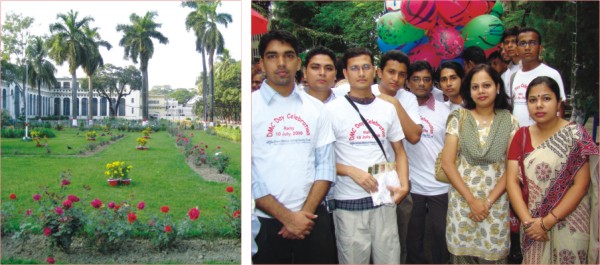
Sandhani
The pioneer of the voluntary blood donation movement in Bangladesh - `Sandhani' (Seeker) - started its journey on February 5, 1977 from the premises of Dhaka Medical College. Every year Sandhani collects on an average 40,000 bags of blood.
Dhaka Medical College Alumni Trust
To repay some of the debt to Dhaka Medical College, Dhaka Medical College Alumni Trust was formed in 1989. Late principal & Professor Wali Ullah was the founder President. The Alumni Trust organised a Reunion and 63rd Dhaka Medical College Day on 10 July with the leadership of Health Minister Prof. AFM Ruhal Haque, MP, accompanied by Prof Mudassar Hossain, Dr Mostafa Jalal Mohiuddin, MP, Prof Nazmun Nahar, Prof. Dr Iqbal Arslan and Chowdhury Jamal Uddin. Hon'ble Prime Minister Sheikh Hasina was the Chief Guest on the occasion.
Acknowledge:
· Professor Mirza Mazharul Islam,
· Smriti- Bismritir Dhaka Medical College' by Ahmad Rafique.
· History of Dhaka Medical College' by Dr. A K M Akhtaruzzaman
Authors:
Dr Monilal Aich Litu, Assistant Professor, Dept. of ENT & Head Neck Surgery, DMC.
Dr Abdul Hanif Tablu, Assistant Professor, Dept. of Pediatric Surgery, DMC.
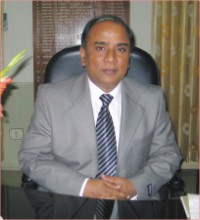 DMC Celebrates Sixty-Three Glorious Years DMC Celebrates Sixty-Three Glorious Years
Prof. Quazi Deen Mohammad shares his views with Star Campus
Ridwan Karim
10 July 2009 marked the sixty-third foundation anniversary of the prestigious Dhaka Medical College (DMC). On this momentous occasion, Star Campus interviewed Professor Quazi Deen Mohammad, the current principal of the country's pioneer academic institute of medical science.
Elaborate arrangements have been undertaken to celebrate the foundation anniversary of DMC, comprising of a daylong celebration and the laying of the foundation of a new academic building. Prof. Deen Mohammad reflects that the original infrastructure of DMC is now more than fifty years old, and had been developed when the number of total students was 400-500. The foundation of a new academic building had become essential now that this institution has grown much larger with over 2000 graduate and post-graduate students. The daylong celebration on 10 July witnessed the get-together of a huge number of doctors from all over the country and abroad. It was an affair of magnanimous proportions, considering the fact that more than twelve thousand doctors have graduated from DMC over the years.
During the last sixty-three years, DMC has become intricately linked with the history of Bangladesh itself. Prof. Deen Mohammad reminisced about the crucial role played by the students and teachers of DMC during the language movement, the liberation war and other historic national movements. The contribution of DMC in the educational and health sectors of the country has undeniably been one of the building blocks of this country. Many of the country's top-notch physicians, researchers and teachers have received their education at DMC. It remains a coveted institute among the brightest and the most meritorious students of Bangladesh. Its fame has now crossed borders, and DMC now receives students from USA, UK, India, Pakistan, Nepal, Malaysia and many other countries.
Prof. Deen Mohammad envisages that DMC will build upon its current international reputation to become a regional center of excellence within 5-10 years. In the meantime, it will continue to strive to achieve the millennium development goals of Bangladesh by increasing and preserving the coverage of national healthcare service.
|

